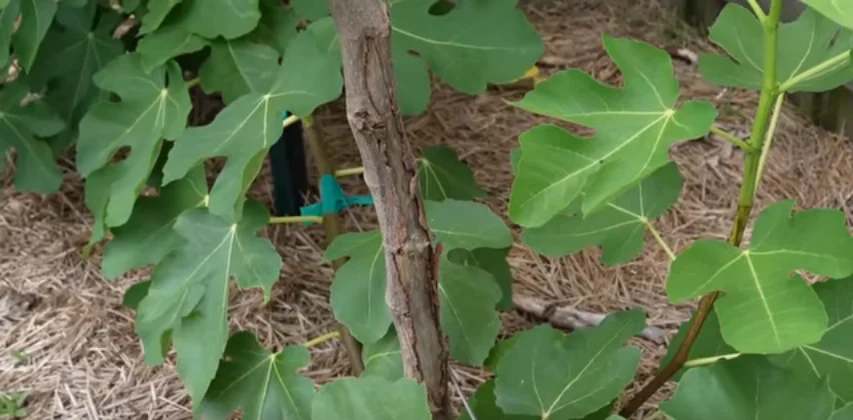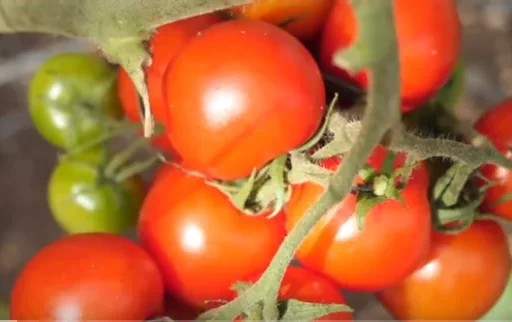Figs are a favorite among gardeners for their delicious fruit and adaptability. While they originate from Mediterranean climates, fig trees can actually thrive in a variety of environments, even in cold climates with shorter summers. In this article, we’ll discuss how to grow figs in colder regions, focusing on early-ripening varieties and container growing techniques. We’ll also address some of the challenges cold weather presents and how you can overcome them to enjoy a successful fig harvest.
The Challenge of Growing Figs in Cold Climates
Fig trees are deciduous, meaning they shed their leaves in winter and enter a period of dormancy. In their natural Mediterranean habitat, winters are mild, and frosts are rare. As a result, figs are often considered less cold-hardy compared to other fruit trees. While fully dormant fig trees can withstand some hard freezes, they are highly susceptible to damage when they emerge from dormancy during unseasonably warm winter days. This premature wake-up makes them vulnerable to late frosts and freeze damage, even in milder climates like USDA zone 8.
Even in areas with relatively mild winters, such as the southeastern coast of North Carolina, some fig varieties can experience winter damage. Trees may lose bark, suffer from split wood, or even die back completely to the ground, only to regrow from the base. The key challenge for gardeners in colder climates is figuring out how to prevent cold damage while still encouraging fruit production in a short growing season.
Growing Figs in Containers: A Simple Solution
One of the most effective ways to grow figs in colder regions is by using containers. Fig trees grow exceptionally well in pots, and container gardening allows you to move the trees indoors during winter, preventing damage from extreme cold. This method works well even in areas as cold as USDA zone 5A, and potentially even 4B with the right techniques.
Here’s how you can successfully grow figs in containers in cold climates:
- Wait for Fall Frosts: Allow the first few frosts of fall to defoliate the trees naturally.
- Prune for Winter: After the trees have shed their leaves, prune them back to a neat, compact shape to make them easier to store.
- Store in a Cool Place: Move the containers to a basement, garage, or another area that stays cool but does not drop below freezing. The trees will stay dormant through the winter.
- Bring Them Out in Spring: When spring arrives and the risk of frost has passed, simply bring the trees back outside, and they’ll begin to grow again.
While this method solves the problem of cold winters, you still need to select fig varieties that will ripen within your short growing season. Fortunately, there are several early-ripening varieties that perform well, even in cold climates.
Best Early-Ripening Fig Varieties for Cold Climates
Now, let’s take a closer look at some of the best fig varieties that ripen early and are perfect for colder, short-season climates.

1. Ronde de Bordeaux
Ronde de Bordeaux is widely regarded as one of the best early-ripening fig varieties. It produces fruit that ripens quickly—typically within three days once it begins to swell—making it ideal for regions where late-summer thunderstorms and humidity can cause issues for slower-ripening varieties. This variety is known for its incredible taste, which features a complex mix of berry flavors with a hint of raisins. In areas with rainy summers, Ronde de Bordeaux can still thrive, producing juicy, jam-like figs.
2. Sao Miguel Roxo
Also known as Azores Dark, Sao Miguel Roxo is a hardy, early-ripening fig that can tolerate colder temperatures. This fig is part of the “Mount Aetna” family, a group of cold-hardy figs that can survive dieback to the ground during winter and still produce fruit the following season. Sao Miguel Roxo has similar traits to the popular Chicago Hardy fig but is considered superior in taste, size, and texture. It is a great option for gardeners looking for a fig that performs well in both cold and rainy climates.
3. Marseilles Black VS
Another member of the Mount Aetna family, Marseilles Black VS is similar to Sao Miguel Roxo but easier to find commercially. This variety also ripens early and can tolerate cold winters, making it a great choice for those who struggle to find Sao Miguel Roxo. The figs are large, flavorful, and often ripen earlier than Chicago Hardy. If you want a reliable, cold-hardy fig tree that’s readily available, Marseilles Black VS is an excellent option.
4. Olympian
Olympian is a lesser-known fig variety, but it deserves more attention due to its outstanding cold tolerance and ability to thrive in rainy conditions. This fig is readily available in garden centers and online, and it produces fruit with a unique flavor profile that sets it apart from other varieties. Olympian figs are known for their rich, sweet taste and are highly resistant to rain-induced splitting. This makes them an ideal choice for gardeners in regions with unpredictable summer weather.
5. Chicago Hardy
Chicago Hardy is one of the most popular cold-hardy figs, especially in zones 5-7. While it may not have the best flavor compared to other varieties, it is a reliable producer that can survive severe winters, dying back to the ground and regrowing the following spring. Its ability to fruit even after harsh winters makes it a go-to option for many gardeners in colder climates.
Tips for Growing Figs in Cold Climates
- Choose the Right Variety: Select early-ripening varieties that can produce fruit within your growing season’s time frame.
- Use Containers: Growing figs in containers allows you to move them indoors during winter, protecting them from extreme cold.
- Prune Regularly: Keep your fig trees compact to make storage and handling easier during the dormant season.
- Monitor Winter Conditions: Be mindful of late frosts in spring that can damage emerging growth.
- Provide Winter Protection: If you grow figs in the ground, consider insulating the base of the tree or wrapping it in burlap to provide extra cold protection.
Frequently Asked Questions (FAQs)
- Can I grow figs in a zone as cold as 5A? Yes, you can grow figs in USDA zone 5A by using container gardening and selecting cold-hardy, early-ripening varieties like Ronde de Bordeaux or Sao Miguel Roxo.
- Do fig trees need full sun to thrive? Yes, fig trees prefer full sun, ideally receiving at least 6-8 hours of sunlight per day for optimal fruit production.
- How should I prune fig trees grown in containers? Prune fig trees in late fall after they have shed their leaves. Focus on maintaining a compact shape to make indoor storage during the winter easier.
- How do I protect my fig trees from winter damage? If growing figs in containers, move them indoors during winter. For in-ground trees, wrap them with burlap or use mulch to insulate the base.
- How long does it take for fig trees to bear fruit? Depending on the variety, fig trees typically bear fruit within 2-3 years of planting.
- Do fig trees need to be fertilized? Fig trees benefit from light fertilization during the growing season, particularly if they are grown in containers.
- Can fig trees survive without irrigation? Fig trees are relatively drought-tolerant, but consistent watering is essential for healthy fruit development.






